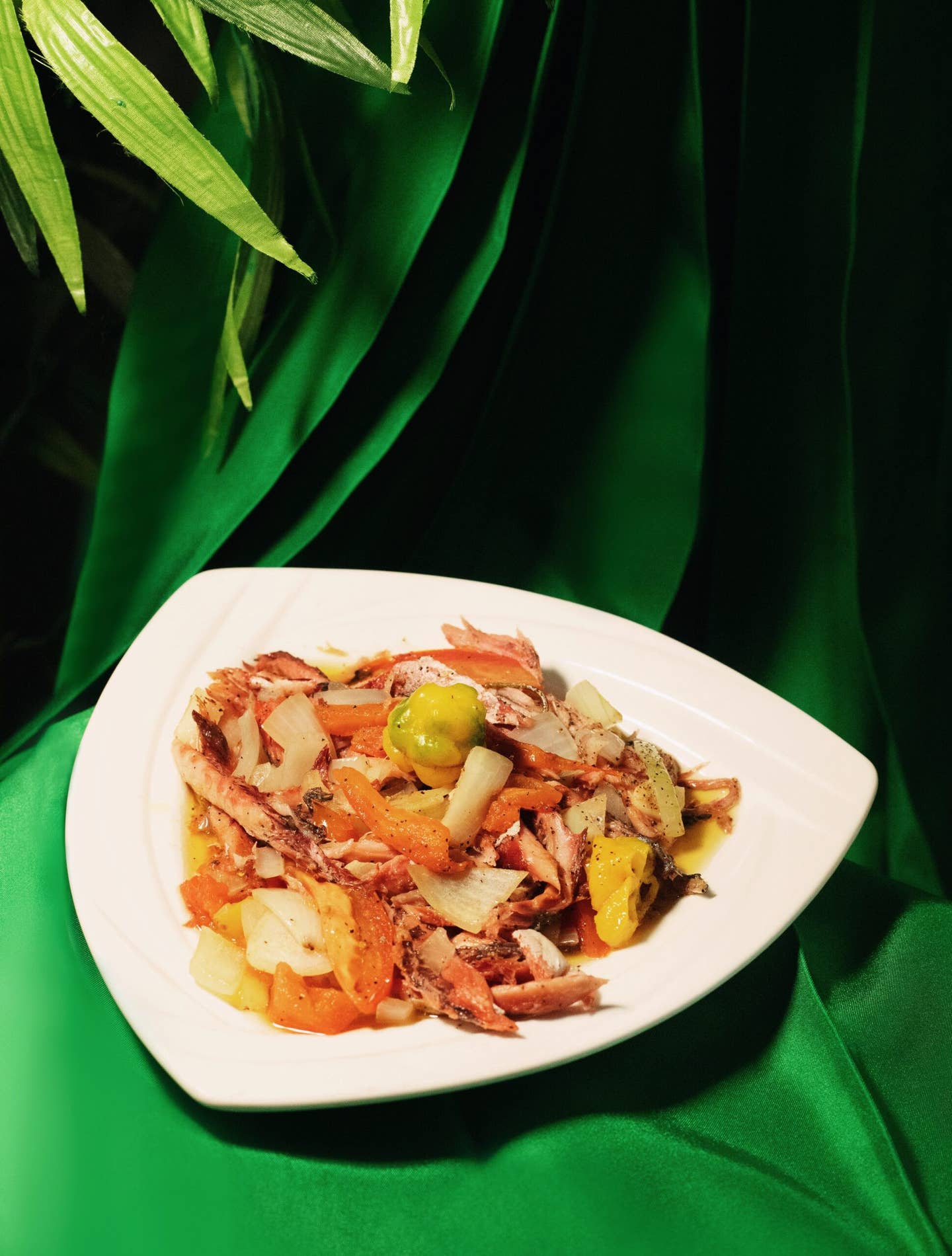
For years the conductor of Rotterdam's Tram No. 7 would make an extra long stop at Vlietlaan Street where—for nearly two decades—my in-laws' take-out restaurant, Wha Kong 2, has served up the beloved Dutch staple known as Indo-Chinese food.
I remember how the conductor would call the restaurant five minutes before he arrived; and how my father-in-law, Tuful Kuo, and his staff would immediately fire up the woks. Succulent Indonesian-style grilled pork was doused in a crimson Chinese-style sweet and sour sauce to make the dish called babi pangang. Spring rolls, or loempias, were stuffed with leeks, cabbage, celery, pork, and shrimp just before they hit the deep fryer. Moments later, my father-in-law would dart across the street to hand the containers to the stalling conductor, just as the riders started to grow restless.
I realize these dishes might seem exotic in the land of Dutch pancakes and pickled herring. But, in fact, it's part of a beloved cuisine that's been here for about a century. Chinese immigrants, many of them working as stokers and sailors for Dutch shipping companies, were already running restaurants in port cities like Rotterdam and Amsterdam in the early 1900s. But the term, "Chinese Food" took on a whole new meaning when, in 1945—following more than three centuries of Dutch rule—Indonesia secured its independence.
Chinese restaurateurs saw an opportunity, tweaking their menus to appeal to returning Dutch expats who had developed an appetite for Indonesian food abroad. To their Cantonese menus, they added Indonesian specialties: crispy prawn crackers and atjar, a pickled cabbage dish; chunky chicken skewers called kip sate dunked in a simmering peanut sauce; pisang goreng, batter-fried banana sprinkled with powdered sugar, undoubtedly a Dutch touch. In essence, they were birthing a new style of cooking, one that combined the sugar and spice of Indonesian fare with their traditional Chinese recipes—fried rice called nasi goreng, red-hot sambal sauce, fragrant curries, loempias and other delicious fusions.
To the people of Rotterdam Wha Kong 2 and the cuisine it serves are now indispensable, a lesson I learned last summer when Tuful Kuo announced a week-long vacation.
"What will I eat while you're gone?" one patron wailed.
"I consider this takeaway my best friend," said another.
Clearly, the food has proven addictive to the Dutch. But it turns out they're not the only ones. When you visit Wha Kong 2 ("Wha Kong" is the Dutch pronunciation of two Chinese words that mean "Chinese garden."), you might wonder where Wha Kong 1 is. That restaurant opened in Madrid 20 years ago, when my husband's uncle traveled to Southern Europe to capitalize on the growing popularity of Indo-Chinese cuisine among the Spaniards.
Keep Reading
Continue to Next Story










